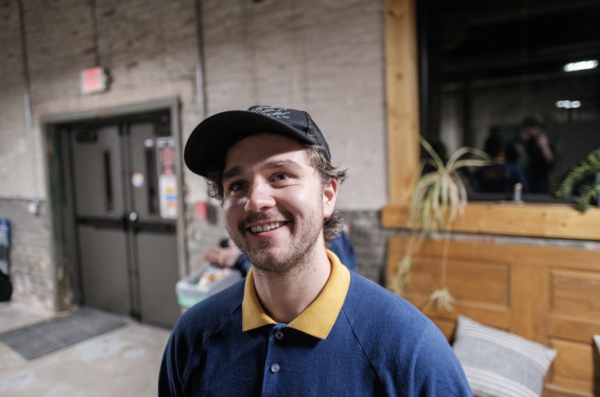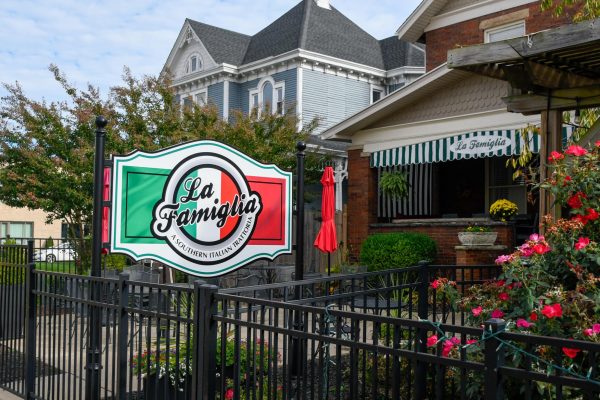RED’S READS: ‘Interview with the Vampire’
Turning into bats? Skin that sparkles in the sunlight? Transylvania? While “Interview with the Vampire” by Anne Rice doesn’t have any of these things, it’s still an amazing vampire novel. But in order to read it, you have to get rid of all your preconceived notions, ideas and stereotypes about vampires. Buckle up, because “Interview” is nothing like “Dracula” or “Twilight.”
Let’s get right to it. This novel is unlike any narrative book I’ve read. The whole story, as the title suggests, is a vampire telling his story via an interview. As a journalist, I both love and hate this concept. Almost the entire book is in quotes, as the vampire Louis is recounting his life story to an unnamed interviewer. How did this interview happen? Well, the novel never explains. Get used to it, because this novel hardly explains anything you want it to.
So, as Louis explains in his long-winded, wordy way, he became a vampire in the year 1791, at age 25, outside of New Orleans at his plantation, Pointe du Lac. By the way, in the present when Louis is talking with the interviewer, it’s about 1976. Grieving after the death of his brother, Louis longs for death, and death comes to him in the form of the vampire Lestat. Lestat has been watching Louis and chooses him to be his fledgling vampire companion. At first, Louis is indifferent, and the reader must wonder, did Louis really take the time to think this through?
After experiencing the excruciating transformation into becoming a vampire, Louis is immediately starkly different than Lestat. Charming, smooth talking Lestat has a dark side, while quiet, shy Louis can’t even bring himself to feed on humans. (Yes, vampires still do drink blood in this book.) Lestat is interested in Louis’ money, and all Louis is interested in is learning more about his kind, with Lestat being no help at all.
After a devastating fire, the details of which I won’t get into, the two vampires realize they must leave the plantation and head into the heart of the city. Here comes the next big plot point: while wandering through New Orleans one night, Louis stumbles across a young girl and her mother. Upon further examination, Louis discovers the mother has died from the plague, and the girl is too young to comprehend her death. Desperate and emotional, Louis drinks the child’s blood and flees. Lestat, always the devilish type lurking in the shadows, discovers that Louis did not kill the girl when he fed. After a few days, Lestat takes Louis to an orphanage where the girl is staying. They convince the overseers that they are her relatives and take her away.
Once back in their townhouse, Lestat convinces Louis to turn the young girl, Claudia, into a vampire. Louis begins but cannot finish the task; Lestat takes over, and the vampire Claudia is born. On top of all his other emotional problems, now Louis must deal with being partially responsible for bringing a vampire child into the world.
At first, the three vampires are happy. They enjoy the world and all the culture and human blood it has to offer. But one day Claudia becomes unhappy; she realizes she’ll never grow up and become a woman. She’s trapped in a child’s body forever, though her mind has matured. She takes her anger out on Lestat, and she plans to kill him. Good, sweet Louis tries to intervene, but he realizes he cannot stop Claudia. Plus, he’s felt resentment toward Lestat for years because Lestat would never give him the answers he sought. As a reader, I was looking for these answers as well, such as where did vampires come from, how many are there, etc.
Flash forward. Louis and Claudia have left New Orleans behind and are headed for Europe on a ship. What happened to Lestat you might wonder? I don’t have the space to answer…you’re just going to have to read it yourself. So, once in Europe, the pair are on a mission to discover other vampires. You must understand, they’ve never met another one besides Lestat, and the world can feel empty when you’re mostly alone, without others like you.
The last half of the book is definitely the best. All I’ll say is yes, Louis and Claudia discover other vampires, but again, you have to find out the juicy details for yourself. A lot happens, and Louis eventually returns to his beloved New Orleans, although he is much changed. He no longer searches for answers; that light in him has died. He received some answers, but they did not satisfy him, and the cost was almost more than he could bear. And that is the end of his story. There’s so much more I can tell you, but they would all be major spoilers.
“Interview with the Vampire” made me fall in love with reading again; it made me feel excited to keep reading. Though some parts of the book were boring or too drawn out, it’s a great story. It’s my favorite vampire novel without a doubt. And there are sequels! “Interview” is the first in the series, and I’m told the books following only get better from here.
This novel has it all. Fascinating characters, mystical elements and an intriguing storyline. It combines elements of vampire lore while at the same time creating new myths. It’s heartfelt and raw and emotional. I couldn’t think of a better narrator to tell his story because Louis is the most human-like vampire; he never lost his human nature or heart. This is a classic tale that deserves a place on every serious reader’s bookshelf.
Amanda Larch can be contacted at larch15@marshall.edu.
Your donation will help continue the work of independent student journalism at Marshall University. If you benefit from The Parthenon's free content, please consider making a donation.











